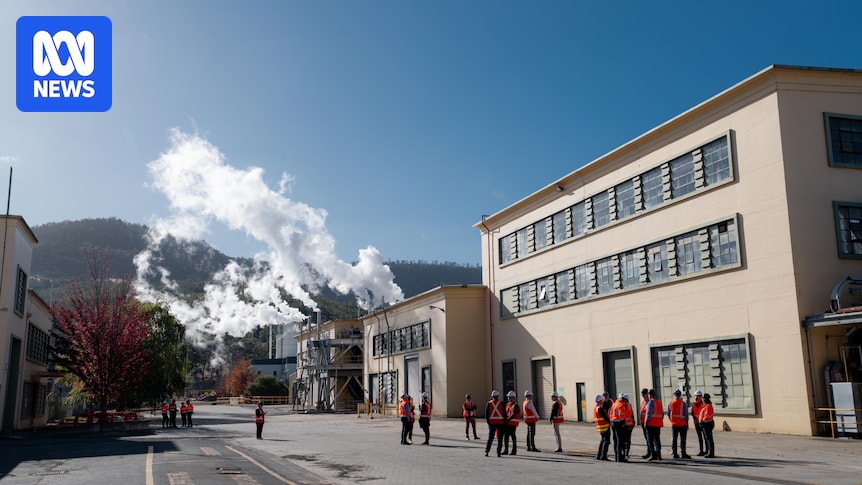
On the banks of Hobart’s Derwent River, the Boyer Mill stands as a testament to Australia’s industrial history. As the country’s first and now last paper mill, it has been a cornerstone of the local economy since its establishment in 1941. However, its reliance on coal-fired boilers, a technology that dates back to its inception, is now at the center of a significant transformation challenge.
The mill’s new owner, businessman David Marriner, is determined to transition from coal to electric boilers, a move that could reduce the plant’s on-site emissions by approximately 95 percent. This reduction is equivalent to removing one-third of Tasmania’s cars from the road. However, the ambitious plan faces a major hurdle: securing the additional electricity required for the conversion.
The Power Dilemma
Currently, the Boyer Mill is one of Tasmania’s largest power consumers, using around 100 megawatts. The switch to electric boilers would necessitate an additional 45 megawatts. Mr. Marriner has been informed by Hydro Tasmania, the state-owned power company, that the local grid cannot supply the needed power. Instead, electricity would have to be imported from Victoria at a significantly higher cost.
“I feel stressed and somewhat frustrated in the discussions and negotiations we’ve been having,” Mr. Marriner expressed, highlighting the challenges of the transition. The new boilers, sourced from a Norwegian company, are set to be installed in 15 months, but without a viable power solution, the future of the mill remains uncertain.
Economic and Environmental Impacts
The Boyer Mill’s reliance on coal is not just an environmental concern; it also comes with a hefty financial burden. The mill’s Boiler No. 5 consumes about 88,000 tonnes of coal annually, costing $12 million each year. Since losing its local coal source three years ago, the mill has had to import coal from Newcastle, New South Wales, further increasing costs.
The federal government has pledged $24 million to support the mill’s transition, with $9 million allocated for stabilizing operations and preparing for decarbonization. Despite this support, the energy supply issue remains a significant barrier.
Historical Challenges and Future Prospects
This is not the first time the Boyer Mill has faced obstacles in its electrification efforts. Under previous ownership by Norwegian company Norske Skog, plans for electric boilers were halted when Hydro Tasmania refused a request for 50 megawatts. Despite assurances from Liberal spokesperson Nick Duigan that sufficient power is available, the reality of securing affordable and sustainable energy remains complex.
“There is certainly enough power to do what’s planned at the Boyer site, I have no doubt about that,” Mr. Duigan stated, though the current negotiations tell a different story.
Broader Energy Concerns in Tasmania
The challenges faced by the Boyer Mill are indicative of a broader energy crisis in Tasmania. Michael Bailey from the Tasmanian Chamber of Commerce and Industry has long warned of the state’s energy supply issues, stressing the need for new generation projects to support industrial growth.
The proposed Marinus Link, a project involving two 750 megawatt cables between Tasmania and Victoria, could provide a solution by enabling more energy trading. However, the project awaits a final investment decision, and many other energy initiatives remain stalled in approval processes.
Ray Mostogl from the Tasmanian Minerals, Manufacturing and Energy Council advocates for focusing on large-scale generation projects near existing transmission corridors to avoid costly infrastructure developments.
“It’s not just power, it’s power at the right price,” Mr. Mostogl emphasized, underscoring the economic implications of energy supply decisions.
Looking Ahead
For the Boyer Mill, the path forward hinges on finding a sustainable and affordable energy solution. Mr. Marriner remains hopeful that “common sense” will prevail, allowing the mill to access Tasmanian-made green energy at a competitive rate. As Tasmania grapples with its energy challenges, the Boyer Mill’s efforts to transition to cleaner energy could serve as a pivotal case study in balancing industrial needs with environmental responsibilities.
As the state navigates its energy future, the implications of these decisions will resonate beyond the Boyer Mill, affecting industrial stability, economic growth, and environmental sustainability across Tasmania.





